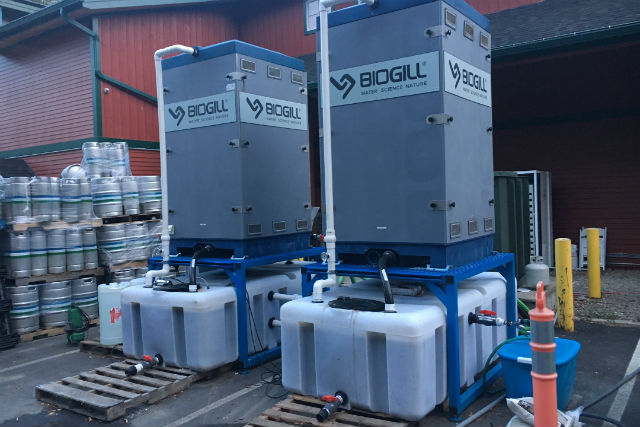
For Katie Alsip, experience is key when it comes to being budget-tight in marketing for an event.
“In an ever growing and saturated ad world, big media doesn’t go as far or connect with a consumer, and it’s expensive,” said the Marketing Manager for Cincinnati’s Rhinegeist Brewery at the Ohio Craft Brewers Association’s yearly meetings. “A lot of breweries don’t have those budgets.”
A taproom is the pulse of a craft beer brand now, Alsip said. And breweries need to look at its taproom as not just a taproom, but a venue and a place for consumers to experience a brewery’s brand.
“This is where you get the first touch point with a consumer, it’s who you are as a brewery,” she said. “It speaks in an organic way of what your brand is. You aren’t telling them who you are, you are showing them. And there is a lot of power in that.”
If a brewery can make consumers passionate on their own in what a brewery is doing, those consumers will tell their friends and talk about it. Letting the consumer take some ownership in what you as a brewery is building because “they will go and tell their friends about the experience, the beer they drank and that is your free marketing,” Alsip said.
Alsip shared a few points and stories of how Rhinegeist creates experiences that translate into free marketing through the consumer:
- Prioritize: A lot of figuring out what works and what doesn’t will vary for for each brewery. Even seeing what events are going on in your area can help unlock some thoughts. “Look at your capacity, your resources, what can you physically pull off and do well,” she said. “This isn’t about doing an event each week just to have something going on every week. Don’t bore the consumer, do something meaningful and have purpose.”
- Don’t oversaturate: Alsip said she will help plan 3-4 high-tier events per year that takes months of planning and add in monthly events that only take a few weeks to plan. Some come organically, like a Halloween Costume Contest.
- Balance themes: Host a variety of events spanning topics of beer, local passion points, and ‘surprise & delight’ tactics. “When we started out, we were doing things strictly related to a beer launch,” Alsip said. “A lot of those were tied to a beer-related releases or sales imitative. Since, we have grown to expand that and diversify our theme.” An example is a skateboard event that had nothing to do with a beer release and everything to do with a ‘cool factor,’ community, and bringing in a completely different group of people that might not have visited the taproom. “We got them in, it was relevant to them and it was interesting to other people too,” she said.
- Beer not always the focus: “Don’t be so stuck that your event has to be beer related or sell a beer launch,” Alsip said. “Think of yourselves as a venue and an experience and there is a lot of power in that.”






Be the first to comment